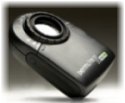Dermatosurgery - removal of skin lesions
Dermatosurgery is a removal of skin lesions within healthy tissues with a scalpel, electrocoagulation, CO2 laser or cryotherapy.
Targeted indications:
- steatoma
- fibromas
- lipoma
- Xanthelasma (Xanthoma)
- viral warts (normal, flat, on the feet)
- genital warts (venereal warts)
- seborrhoic warts
- hypertrophic scars (keloids)
- melanocytic naevi (so-called moles)
- precancerous and cancerous skin lesions
Diagnosis of skin lesions - distinguishing benign from malignant (cancerous) lesions
Each skin growth, before surgical removal, is microscopically and palpationally inspected, and when it is necessary, dermatoscopically examined. Some of the skin lesions, after surgical removal, qualify for histopathological examination.
Dermatoscopy
A non-invasive examination of skin lesions with a special device - dermatoscope. The image is three-dimensional and due to diode lighting and magnification x20, it enables excessively clear evaluation of the internal structure of the lesion, lump or spot on the skin.
Important information before dermatoscopic examination:
1. family history (the occurrence of cancers in the family),
2. current course of disease (when the lesion appeared, how fast it is growing, any change in colour, shape, occurrence of pain, itching, bleeding, ulceration, scab, etc.),
3. history of treatment (external skin preparations, invasive treatment - mechanical extrusion, freezing);
 Dermatoscopy does not give a definitive diagnosis. It enables differentiation of benign and atypical skin lesions and clearly and precisely determines the way of further treatment.
Dermatoscopy does not give a definitive diagnosis. It enables differentiation of benign and atypical skin lesions and clearly and precisely determines the way of further treatment.
Advantages of dermatoscopic examination:
a) safe,
b) painless,
c) possibility of multiple repetitions (recommend with numerous skin lesions),
d) no age-related limitations,
e) can be performed in pregnant women;
- occurrence of new pigmented lesions on the skin,
- evolution of the old birthmarks: a change in the shape, size, colour, consistency, appearance of itching, pain, bleeding, etc.
- the lesions which are often irritated or subject to injuries (the areas irritated by clothing rubbing against them, the areas that are regularly shaved or epilated),
- the lesions located on uncovered skin (often exposed to the ultraviolet radiation);
Dermatoscopic evaluation of skin lesions requires extensive experience. If the doctor is still not sure about the diagnosis, the lesion is removed surgically and examined histopathologically.

